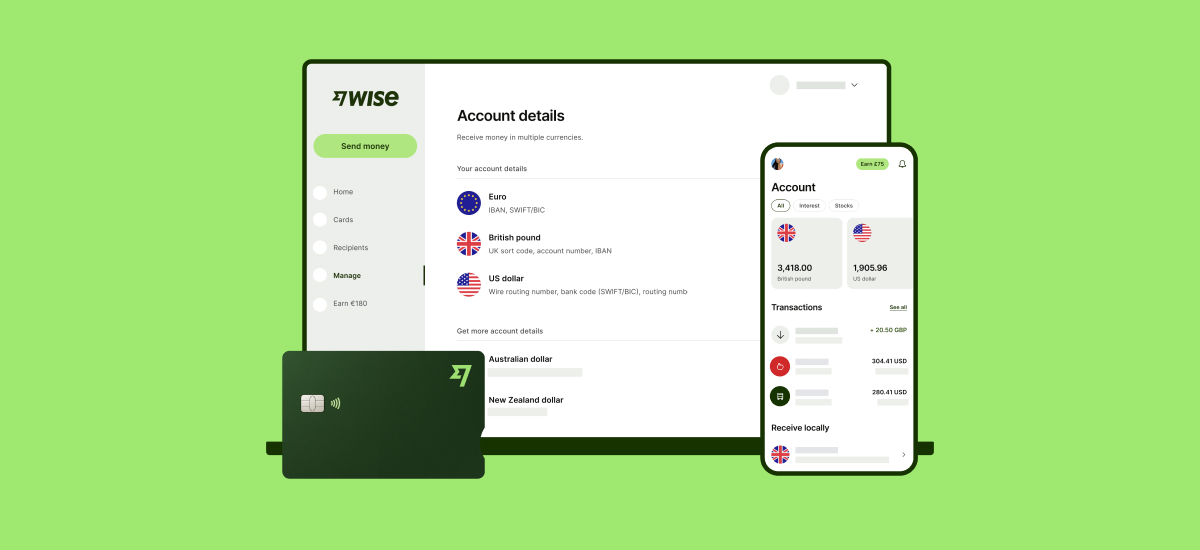How to Open a Business Bank Account in Finland: A Guide for U.S. Entrepreneurs
Learn how to open a business bank account in Finland with this guide. Get essential info and steps for setting up your business finances.

As a business starts to grow, the natural evolution is to think about strategic expansion and how to make that happen.
Gaining entry into new markets is important for your business since it helps you capture new customers and audiences, but how do you make that happen?
Many multinational businesses like McDonald’s, Netflix, and Wal-Mart have expanded into new territories and dominated market share through product localization.
Rather than having a standard product offering and operating method, these businesses have successfully entered new markets by tailoring their products to local markets.¹
| If you’re planning to go global, your business will need adequate tools to localize successfully. Get local account details, offering your customers to pay you in their own currency. |
|---|
This article will walk you through what localization is, why localization is important, and how to develop a localization strategy for your business.
| Table of Contents |
|---|
Product localization refers to the process of tailoring products and services to local market needs and preferences.
It’s essentially the way a business adapts its products and services to better serve international markets, considering language, culture, local trends, politics and other factors.
Most businesses will undertake product localization when going global and create a strategy accordingly.
The goal of product localization is to expand to new markets and capture new audiences without negatively impacting current business operations and financial conditions.
You might also see debates around internationalization vs. localization and whether they are the same.
Product localization is not the same thing as internationalization.
Internationalization is a more complex process and refers to creating products or services that can be used in many different markets and modified according to the market.
Internationalization will include researching target markets, building an understanding of the audience, planning for market and entry and setting up your business for international money management.
Product localization is about tailoring products or creating new products that fit with local markets based on the knowledge gained in the internationalization process.
Product localization is important for businesses because it ensures that you are giving customers what they want.
After all, the world is a big place, and each country has its own nuances, culture, and needs.
Product localization is needed so that products and services will appeal to customers on a local level. Also to help your business diversify in new markets.
| 💡 Did you know? |
|---|
Research like this shows the impact of adapting to local markets. Localization is also needed in new markets to develop a sense of trust and loyalty with audiences that may not be familiar with your products or services.
Many companies have successfully localized by creating tailored strategies for their markets, as shown in the examples below.

Over the last few years, many companies have successfully created a localization strategy for new markets.
Let’s look at a few localization strategy examples and localization examples to understand how companies have successfully entered and stayed in new markets:
As one of the world’s top streaming services, Netflix has successfully expanded into 190 countries and continues to grow at a rapid pace.
A large part of the reason why Netflix was able to accomplish this kind of growth across different markets is through targeted localization.
Rather than trying to enter many different markets, they took a strategic approach that included working with local partners to gain more cultural context.
Using the audience data they gathered, Netflix was able to create targeted local content while also providing international content based on audience preferences.
Taking each local market individually, Netflix crafted a localization strategy that took into account cultural differences, audience preferences, and language to appeal to each country they expanded in.³
Travel and hospitality company Airbnb has captured market share in many different countries and continues to grow exponentially.
Airbnb’s success has primarily been due to its commitment to localization and creating an inclusive customer experience across the many countries they operate in.
Their product localization is also factored in rules and regulations in each country, as well as linguistic and design changes needed for users to trust the platform.
That means ensuring their product is available in local languages to make content accessible to hosts and guests while also staying respectful of the cultural, legal, and local expectations within those countries.
The platform’s design and experience continues to evolve to match user expectation no matter where they are and builds trust in the platform.⁴

A successful localization strategy needs to take into account linguistic, cultural, and technological factors for markets.
That’s why it’s integral to look at each business function and how best to localize it to appeal to local markets.
Your localization strategy must consider how it will adapt products and the marketing and messaging around it, pricing, and operations to match each territory.
Here are some steps to consider as you craft a localization strategy for your business:
Before entering a market, it’s crucial to take a deeper look at the target country and what kind of audiences you’re looking to target.
Once you have an understanding of the macro factors, it’s time to go granular and research your target market.
Global expansion is often challenging for many because of the lack of understanding of nuances of culture and language in target markets.
Politics, trends, interests, and so much of audience behavior is influenced by culture and language. That can often be hard to grasp if you are not already familiar with the market.
That’s why it’s so crucial to pair thorough research with a team of experts on the ground in markets.
They can give you more insight and context into research findings and help you set up operations across different business functions that fit with the cultural context.
| Working with local teams means you have to pay them in their own currency. With Wise Business you can pay overseas employees and contractors in more than 50 currencies. |
|---|
Manage overseas payments with Wise
Once you understand your target audience better, consider how your product will be marketed to appeal to local audiences.
But based on product demand and competitors, your marketing needs to demonstrate the impact and benefits it provides to the local market.
Once you’ve successfully undertaken the localization process, that’s just the beginning of business growth!
Many other parts of the business will require continuous monitoring and management.
To increase your chances of success after initial localization, you’ll need to monitor your business, trends, and competitor activity in given target markets.
Plus, keeping a consistent eye on revenue, including financial statements, can help you anticipate issues beforehand and give you the insight needed to run a successful global business.
Localization is easier when you have the right financial tools at your disposal.
You’ll need to manage money in multiple currencies and pay local teams that you’re working with, without incurring high fees.

Open your Wise Business account today
Sources:All sources checked on 2022 March 9
*Please see terms of use and product availability for your region or visit Wise fees and pricing for the most up to date pricing and fee information.
This publication is provided for general information purposes and does not constitute legal, tax or other professional advice from Wise Payments Limited or its subsidiaries and its affiliates, and it is not intended as a substitute for obtaining advice from a financial advisor or any other professional.
We make no representations, warranties or guarantees, whether expressed or implied, that the content in the publication is accurate, complete or up to date.

Learn how to open a business bank account in Finland with this guide. Get essential info and steps for setting up your business finances.

Learn how to open a business bank account in Switzerland. Discover the essential steps to set up your business finances.

Learn how to open a business bank account in France. Get essential tips and steps for setting up your business finances.

Learn how to open a business bank account in Germany. This guide offers localized steps for setting up your business finances efficiently.

Discover the best client onboarding software to streamline your process, enhance client experience, and boost efficiency. Find your ideal solution today!

Find the best returns management software to streamline your business operations. Discover top solutions for efficient product returns.